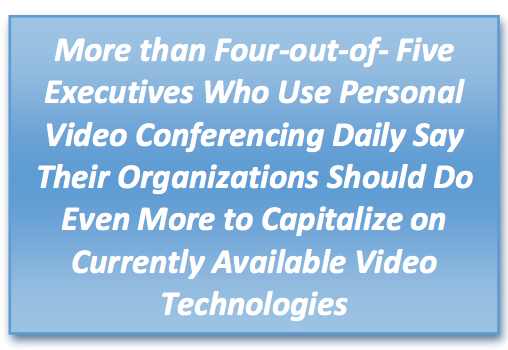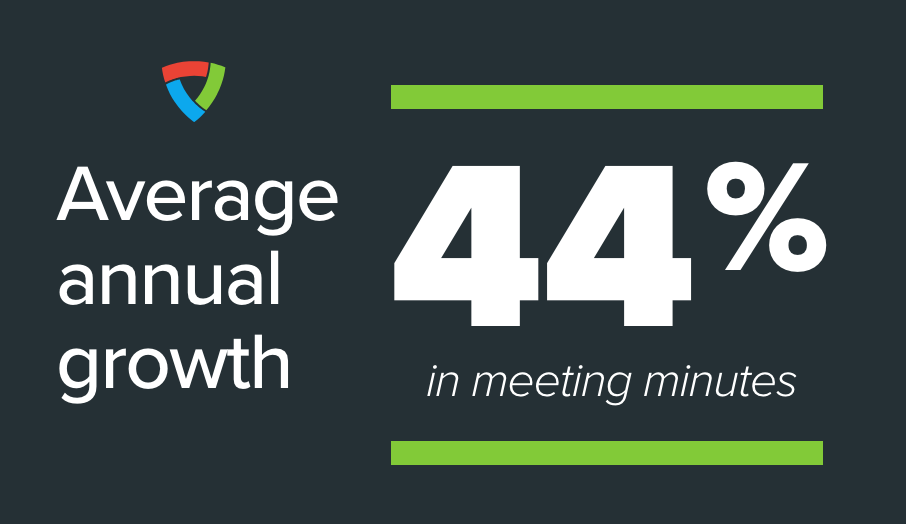In this blog, we have discussed adoption A LOT. At my count, we have 34 blogs that are tagged with that topic, and we have produced 4 distinct ebooks on the topic. You can probably figure from this that we are passionate about the topic. But have you ever wondered why?
Well, I have spent more time than almost anyone researching and talking about it, and I had not. After writing our recent ebook, Benchmarks and Best Practices to Grow Video Collaboration, I figured I should take a little time to think about why this topic is so interesting. I condensed it into blog/list format for you all here.
It’s a real problem
According to our research, only 68% of endpoints are used more than one hour a month for video. That means that nearly ⅓ of all endpoints are just collecting dust out there. That is not only a waste of resources, it is a lot of untapped potential to help improve communication. If the majority of communication is nonverbal, and the majority of business communication happens without any visual component, then a lot of communication effort is being wasted on inefficient formats.

Wainhouse Research – “Enhancing the Value of Video Communication”
When you combine this with the fact that an overwhelming number of leaders and people who use video communication think that MORE people should use video more often, you start to realize that expectations and reality are very disconnected when it comes to video communication.
Bottom line, if you are buying a technology to improve productivity, increase worker happiness, and reduce costs, then you should have quantifiable goals and ways to measure impact.
People don’t know what “Good” Adoption is
Which brings me to one of the more confusing/frustrating pieces of data. Nobody knows what a “good” level of adoption is! Can you answer any of these questions?
- What percent of your users should be using video on a daily/weekly/monthly basis?
- How many hours a month of video do you think any user should engage?
- What portion of meetings should include collaboration technology?
If you can, then you are ahead of the game.
Even more astounding than the extent of the problem is the lack of work that has been done to solve it. You would think that someone would have taken a leadership role and defined what good adoption means, but it hasn’t happened! In one survey, we found that 66% of UC managers stated that setting adoption goals was critical to success, yet 80% either didn’t have goals or were not held accountable to them. WHAT!?
https://www.youtube.com/watch?v=rSfebOXSBOE
It’s a big market
Worth as much as $40.84 billion (with a b) dollars by 2022, video communication is a pretty crazy market when you think about the fact that people are spending that much without any real, definite idea on how it is helping their business.
The fact is that the best way to get more resources is to demonstrate how much each unit of investment brings in returns to the company. Since nobody has really attempted this for video communication, it is highly likely that there is a lot of potential for growth in this market. The more you realize the potential for an investment, the more you will invest in it.
The video market has been heating up, but we feel this is only the beginning.
We have the data
At Vyopta, we have worked with hundreds of large enterprises and compiled billions of data points to help address this problem.
Our answer is that there isn’t really a “one size fits all” number for adoption. It depends on your company size, use cases, industry, and investment in video. However, we do share some global benchmarks in our new eBook, and we can also work with you to figure out the exact definition of “Good” adoption that works for your company.
Examples of Key Metrics:
- Number of Video Calls
- Growth rates for minutes, meetings, and calls
- Active Endpoints (by type)
We have lots of help
We work in collaboration, and we bring that idea to our partner relationships as well. Vendors, analysts, industry press, partners, integrators, and resellers are all on the same side of the issue in adoption. Everybody wants more.
Our mission is to connect everyone around a data framework to help define adoption benchmarks and help users set goals. Once you know your adoption goals, you can better define return on investment and therefore achieve that business impact you need to make collaboration a competitive advantage for your organization.









